Once more, the city of Hamamatsu in the Shizuoka prefecture has been declared the gyoza capital of Japan, yet again usurping the iconic foodie city, Utsunomiya.
Gyoza, are Chinese-style dumplings, or “pot-stickers”, which were first brought to Japan from China after WWII. Since then, many regions across Japan have modified the gyoza to fit their preferences. No city loves gyoza quite like Hamamatsu however, where restaurants serving gyoza are as abundant as conbini (convenience stores).
What makes the Hamamatsu gyoza special? Actually, in terms of ingredients and taste, the “Hama-gyoza” does not deviate from tradition. In in of itself it is quite the traditional gyoza, the only major difference being that in Hamamatsu it is common to finish off the gyoza by topping it with a fresh pile of bean sprouts. Nonetheless, the people of Hamamatsu have a special fondness for the dumpling, even dedicating an entire festival to it. The Hamamatsu Gyoza Society actively works to promote gyoza throughout the city and beyond.
If you are itching to try your very own Hamamatsu-style gyoza, here is an easy recipe for you to follow!
Ingredients (makes about 70 pieces)
- Pork, minched (300 g)
- Gyoza wrappers (enough for about 70 pieces)
- Vegetable oil, for frying
Seasonings
- Ginger, grated (1 tsp)
- Garlic, chopped (3 pieces)
- Potato starch (1 tbsp)
- Soy sauce (1tbsp)
- Sugar (1 tbsp)
- Sesame oil (1 tbsp)
- Chinese soup stock paste or powdered chicken stock (1 tsp)
- Oyster sauce (1 tsp)
Vegetables
- Cabbage, chopped and boiled (1/2 head)
- Onion, chopped (1 whole)
- Chives, chopped (1/2 bunch)
- Bean sprouts (as much as desired)
Steps
- In a bowl, mix the pork with all of the seasonings until sticky.
- Squeeze the chopped vegetables to ensure that water leaves. Place into the bowl with seasonings and pork, and mix.
- Fill the gyoza wrappers with the mixture. To close the wrappers, slightly wet the edges so they adhere together, and pinch the edges to form a fanned shape.
- Fill a frying pan with vegetable oil and some of the gyoza, in a circular shape. Add water to about 1/3 of the gyoza height and cover the pan. Fry on medium heat until the water is gone.
- Remove the gyoza by placing a plate face down on the pan and flipping it over.Enjoy! Serve the gyoza topped with bean sprouts, and dipped with either a soy sauce/vinegar/chili oil based dipping sauce, or in Sriracha. Goes well with fried rice, ramen, or other Chinese-style soups.


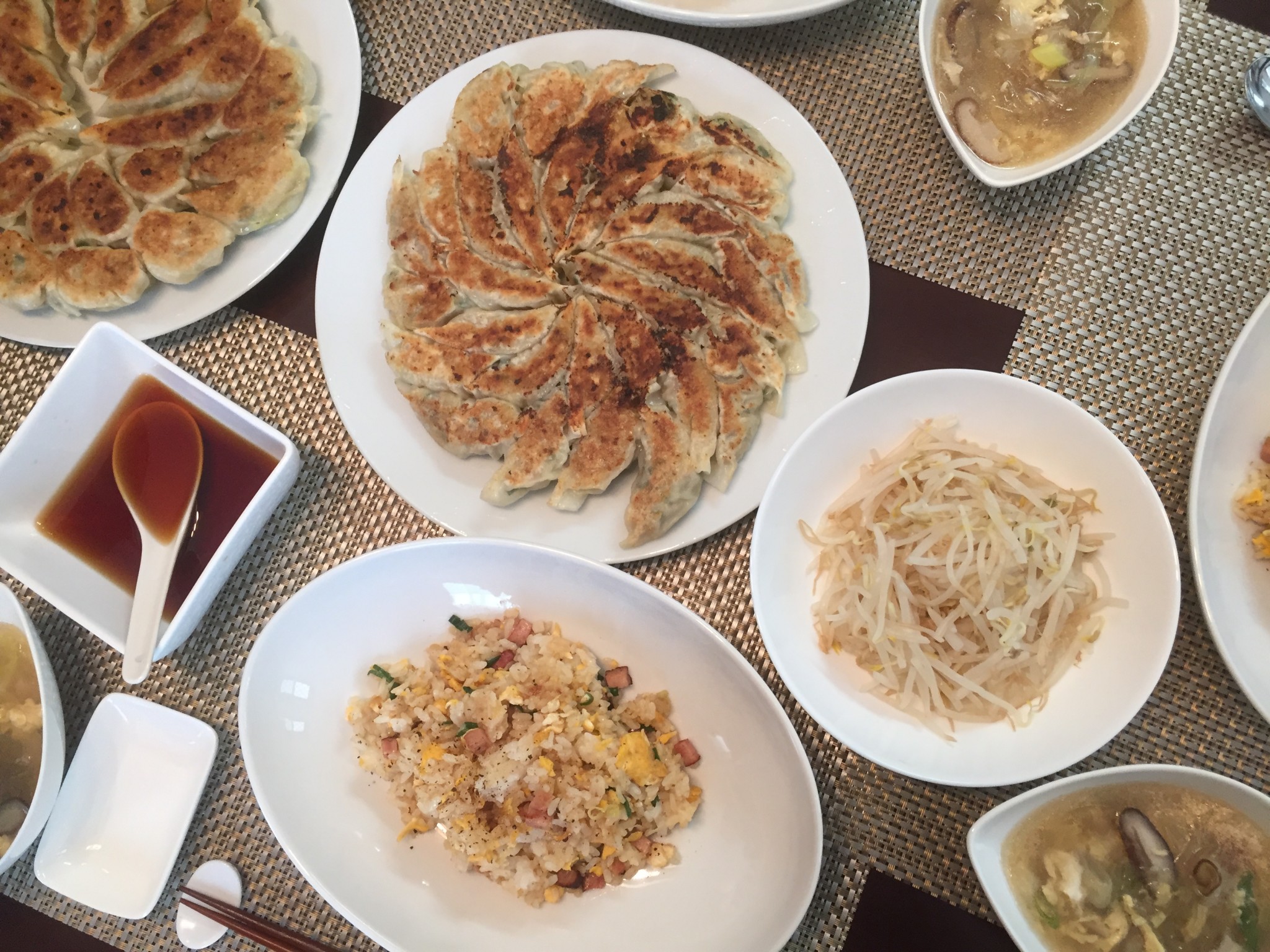
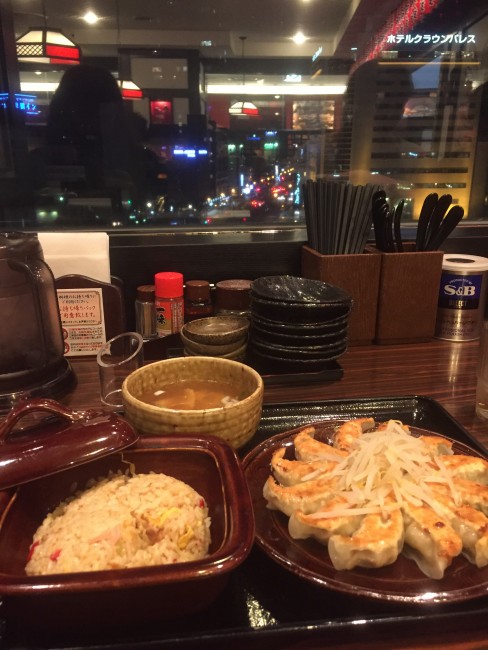
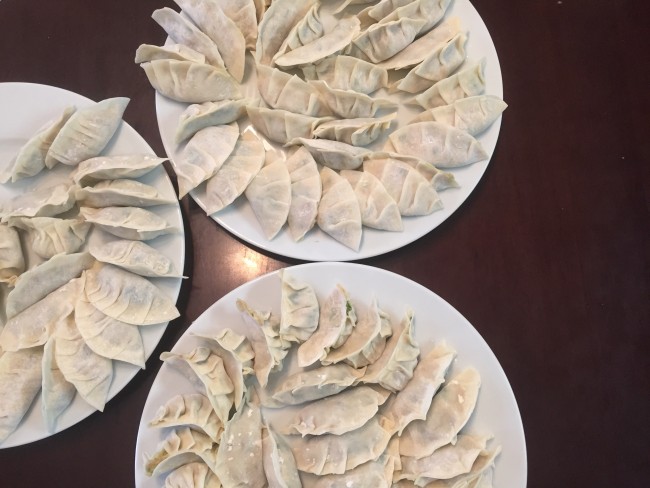
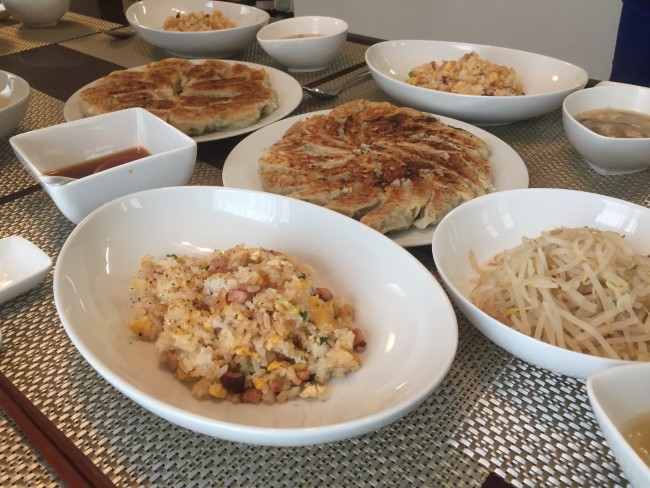










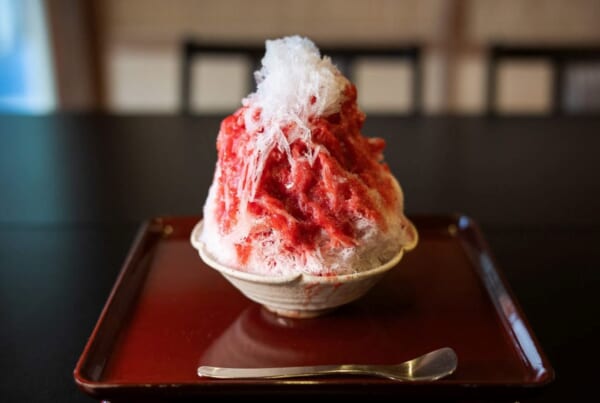
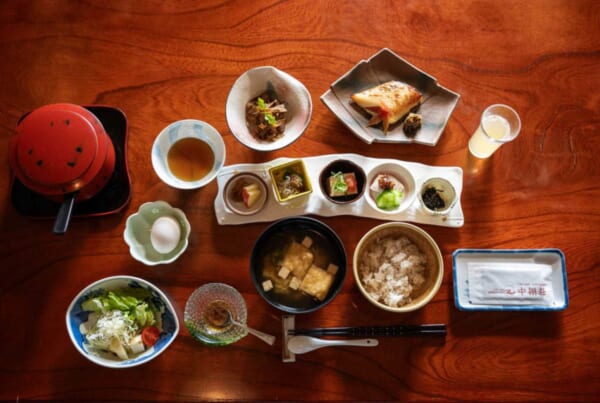
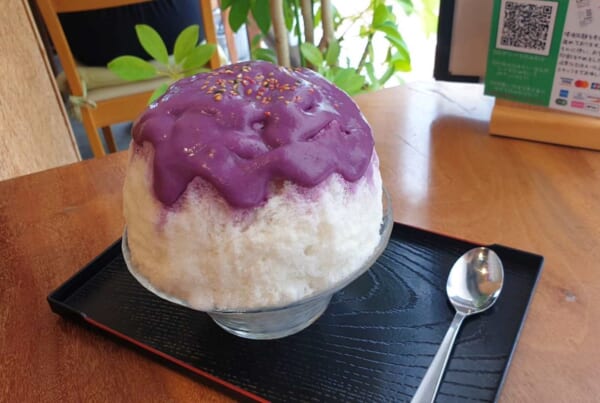

Thank you so much for posting this!!!! I made this with normal American store cabbage, but believe it should be Napa, that I couldn’t find this time of year. Used chicken soup powder for the soup base ingredient. And used garlic chives or “nira” for the chives and steamed the cabbage a bit before finely chopping to get the water out. Had never added sugar to this recipe but believe this was the ingredient I was missing all these years. This is as close as one can get to the authentic gyoza in that part of Japan. I grew up in this part of Japan in the 60s and 70s and have made these for friends and family for 50+ years. Was the first thing I ever learned how to make at 10 years of age? Everyone who visits me asks me to make these when they’re over.